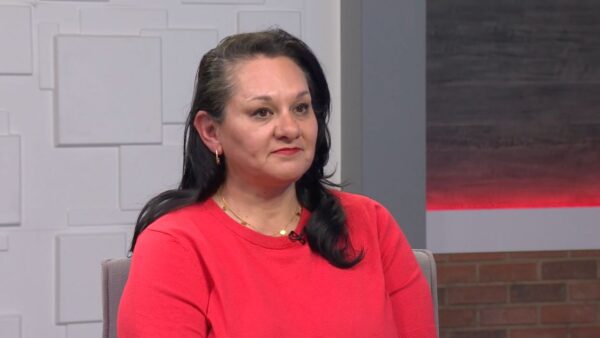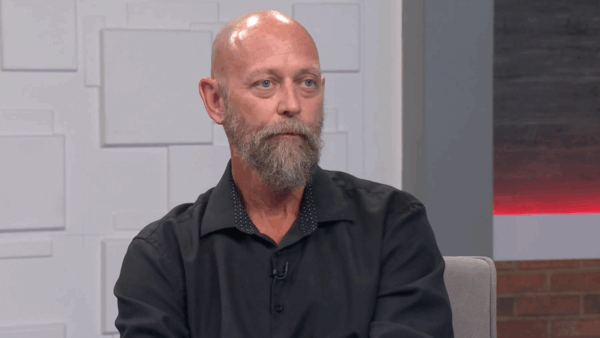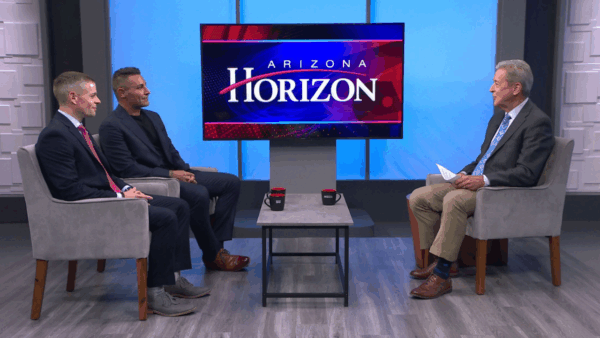Wayne Higby is an internationally-known ceramic artist and is on the faculty of the New York State College of Ceramics at Alfred University in New York. Higby uses ceramic vessels to convey imagery. Higby will talk about his work on Arizona Horizon.
Ted Simons: Tonight's edition of "Arizona Artbeat" looks at the work of internationally known ceramic artist Wayne Higby, who uses ceramic vessels for evocative landscape imagery. We welcome Wayne Higby to "Arizona Horizon."
Ted Simons: It's good to have you here. Thanks for joining us.
Wayne Higby: Thank you ted.
Ted Simons: Now, I was reading up on you and I heard this quote, "meditation on the relationship between mind and matter." Is that what you do?
Wayne Higby: I think that's probably what we all do but I focus on that to some extent in my ideas.
Ted Simons: Explain exactly what you do, what you're trying to accomplish. What do we take away?
Wayne Higby: My work has been a relationship to the American landscape and it draws resources from the history of American landscape art but more than that I think for me it's been the physicality of materials and processes and I work with my hands and make these things but the imagination is certainly a part of that process. Imagination is my mind so the matter and physical thing connected to your imagination is this meditation on material process and mind.
Ted Simons: Interesting. Why landscapes?
Wayne Higby: I was born in the west. I was born in Colorado springs and I grew up there, an only child, had a horse. I guess that pretty much explains that part.
Ted Simons: Well, that's interesting. How does an only child with a horse -- did you do like the rest of us as kids, a little glazed thing in pottery?
Wayne Higby: Yes, I think so. I think in particular perhaps as an only child, I didn't have that many people to talk to, I didn't have brothers or sisters but I worked with sticks and paper and glue and they spoke to me. I think clay of course, I remember that first lump of wet clay and pressing my thumb into it, and having it say hello, you must be Wayne, from that point we have a conversation. Materials and processes have always been that conversational other, a sense of how I communicate with myself, and now how I communicate with other people.
Ted Simons: And some of your art, I think we have a chance to take a look at some of your artwork here. What do we look for? Obviously, there's landscape elements here but what do we look for when we look at ceramics, when we look at pottery, this form of art?
Wayne Higby: I always say an art professor will have a lot of students and I encourage them not to look for anything. I encourage them just to be vulnerable to looking, come and have an experience, don't project, try to just enjoy what you're seeing. And I think if that can happen, you will be able to receive whatever the work is saying.
Ted Simons: And it's the same thing when you do architectural installations, just let it wash over you?
Wayne Higby: Let it come in. Be vulnerable to it. You don't have to immediately decide what it is. But enjoy it and certainly pay attention, you know. As a craftsman I always say craft is the art of paying attention and paying attention to where you are, what you're involved in, what you see is a way of being vulnerable to the world, having it come in.
Ted Simons: With that in mind, do you wait for the muse or do you go sit down every day and find the muse?
Wayne Higby: Well, I don't wait for the muse but I think in that sense being an artist is a job, like anyone else's job, you go to work. Some days you want to be there, some days you don't but you start working and as you start working, things begin to happen and all of a sudden, you're working in and it takes care of itself.
Ted Simons: So for a work day for you, get up early, work all day, get up early do other things, work all afternoon and evening?
Wayne Higby: I've been teaching for 40 years at Alfred university and they have what is considered what the world's most famous ceramic arts program. I get up and I go there every morning three days a week and I teach all day. Then on the other days, I go to my studio very early and I work very early and sometimes, I'll get a phone call that says it's time to eat.
Ted Simons: Is it important for an artist, any artist, to have that connection with people, students or just going out to lunch and living -- working as an insurance agent? Having that connection as opposed to being the artist ensconced in his studio and bruiting over something?
Wayne Higby: I think you need both. I think you need -- one thing, artist's work, it's pretty lonely. But I think the network of other artists, knowing other artists and communicating with other artists is very important to continue to kind of keep things moving and keep you engaged. So it's a combination and it's like, you know, working but also enjoying the idea you might have an audience and someone will come and look at the work
Ted Simons: And someone who wants to look at your work, we have an exhibit this weekend?
Wayne Higby: The retrospective opens this weekend, it shows the past 50 years of my work, 60 pieces in the exhibition. On Saturday the 27th, I think it opens around 2:30 at the ASU art museum.
Ted Simons: And this is a considerable volume here, a catalog, a life history, the whole nine yards. Well, congratulations on a wonderful career and good luck with the exhibit here in Arizona and I hope you enjoy your stay.
Wayne Higby: It's wonderful here.
Ted Simons: Very good, thank you.
Ted Simons: And that is it for now. I'm Ted Simons, thank you so much for joining us. You have a great evening























